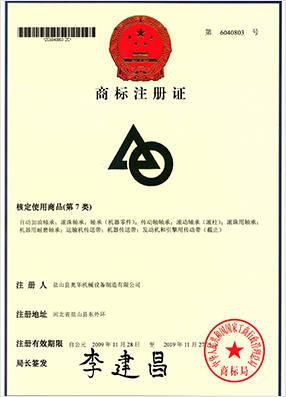 Afrikaans
Afrikaans  Albanian
Albanian  Amharic
Amharic  Arabic
Arabic  Armenian
Armenian  Azerbaijani
Azerbaijani  Basque
Basque  Belarusian
Belarusian  Bengali
Bengali  Bosnian
Bosnian  Bulgarian
Bulgarian  Catalan
Catalan  Cebuano
Cebuano  Corsican
Corsican  Croatian
Croatian  Czech
Czech  Danish
Danish  Dutch
Dutch  English
English  Esperanto
Esperanto  Estonian
Estonian  Finnish
Finnish  French
French  Frisian
Frisian  Galician
Galician  Georgian
Georgian  German
German  Greek
Greek  Gujarati
Gujarati  Haitian Creole
Haitian Creole  hausa
hausa  hawaiian
hawaiian  Hebrew
Hebrew  Hindi
Hindi  Miao
Miao  Hungarian
Hungarian  Icelandic
Icelandic  igbo
igbo  Indonesian
Indonesian  irish
irish  Italian
Italian  Japanese
Japanese  Javanese
Javanese  Kannada
Kannada  kazakh
kazakh  Khmer
Khmer  Rwandese
Rwandese  Korean
Korean  Kurdish
Kurdish  Kyrgyz
Kyrgyz  Lao
Lao  Latin
Latin  Latvian
Latvian  Lithuanian
Lithuanian  Luxembourgish
Luxembourgish  Macedonian
Macedonian  Malgashi
Malgashi  Malay
Malay  Malayalam
Malayalam  Maltese
Maltese  Maori
Maori  Marathi
Marathi  Mongolian
Mongolian  Myanmar
Myanmar  Nepali
Nepali  Norwegian
Norwegian  Norwegian
Norwegian  Occitan
Occitan  Pashto
Pashto  Persian
Persian  Polish
Polish  Portuguese
Portuguese  Punjabi
Punjabi  Romanian
Romanian  Russian
Russian  Samoan
Samoan  Scottish Gaelic
Scottish Gaelic  Serbian
Serbian  Sesotho
Sesotho  Shona
Shona  Sindhi
Sindhi  Sinhala
Sinhala  Slovak
Slovak  Slovenian
Slovenian  Somali
Somali  Spanish
Spanish  Sundanese
Sundanese  Swahili
Swahili  Swedish
Swedish  Tagalog
Tagalog  Tajik
Tajik  Tamil
Tamil  Tatar
Tatar  Telugu
Telugu  Thai
Thai  Turkish
Turkish  Turkmen
Turkmen  Ukrainian
Ukrainian  Urdu
Urdu  Uighur
Uighur  Uzbek
Uzbek  Vietnamese
Vietnamese  Welsh
Welsh  Bantu
Bantu  Yiddish
Yiddish  Yoruba
Yoruba  Zulu
Zulu belt conveyor roller types
Understanding Belt Conveyor Roller Types
Belt conveyors are essential components of many industries, particularly in manufacturing, mining, and logistics. They transport materials efficiently over varying distances and elevations. One key aspect of any belt conveyor system is the roller, which supports the conveyor belt and facilitates smooth movement. Understanding the different types of belt conveyor rollers is crucial for optimizing performance, maximizing lifespan, and ensuring safety.
1. Impact Rollers
Impact rollers are designed to absorb the shock of heavy materials dropping onto the conveyor belt. Typically found in loading areas, these rollers are constructed with durable materials and often have rubberized surfaces to cushion the impact. The use of impact rollers helps protect the conveyor belt from damage, extending its service life and reducing maintenance costs.
2. Return Rollers
Return rollers serve a critical function in a belt conveyor system by supporting the belt on its return trip. The primary role is to maintain the belt's tension and shape as it returns to the loading point. Return rollers can be flat or crowned to help keep the belt in alignment. Proper selection of return rollers is essential to ensure that the belt operates smoothly and efficiently.
3. Idler Rollers
Idler rollers are crucial for supporting the loaded section of the conveyor belt. These rollers are placed at regular intervals along the conveyor and help maintain the belt's tension. Idler rollers come in various types, such as flat, rubber-coated, and training rollers, each designed to meet specific requirements. For instance, training rollers help steer the belt in the correct direction, preventing it from drifting off the track.
belt conveyor roller types

Self-aligning rollers play a vital role in maintaining the proper alignment of the conveyor belt. They are designed to automatically correct any misalignment by adjusting their position. This feature helps prevent excessive wear on the belt and associated components, thereby reducing maintenance costs. Self-aligning rollers contribute to the longevity and reliability of the conveyor system.
5. Crowned Rollers
Crowned rollers have a slightly raised center that helps keep the conveyor belt centered. The design of these rollers ensures that the belt is gently guided back to its proper position if it begins to drift. This feature is particularly beneficial in applications where the conveyor system experiences lateral forces or where there might be inconsistencies in the load distribution. Using crowned rollers can significantly enhance the efficiency of a conveyor system by minimizing belt misalignment.
6. Guide Rollers
Guide rollers are utilized to help position the conveyor belt and guide it along its path. They are often employed in applications where there are changes in orientation or elevation. These rollers help ensure that the belt remains on track, particularly in complex systems where the conveyor may need to navigate around corners or inclines. Installing guide rollers enhances the overall system's efficiency and reduces the likelihood of operational disruptions.
7. Specialty Rollers
In some applications, specialty rollers may be required to meet specific challenges. These can include heat-resistant rollers for high-temperature environments, corrosion-resistant rollers for chemical handling, or rollers designed for heavy loads. Understanding the unique requirements of your application is essential for selecting the appropriate specialty rollers to ensure reliable operation.
Conclusion
Selecting the right belt conveyor roller types is critical in ensuring the efficiency and longevity of a conveyor system. Each type of roller serves a specific purpose and contributes to the overall performance of the conveyor. When designing or upgrading a conveyor system, it is essential to consider factors such as load characteristics, environmental conditions, and maintenance requirements. By choosing the correct rollers, businesses can optimize their material handling processes, reduce downtime, and enhance productivity. Understanding the various roller types and their applications will equip businesses with the knowledge necessary to make informed decisions, ultimately leading to a more efficient and reliable belt conveyor system.
-
Revolutionizing Conveyor Reliability with Advanced Rubber Lagging PulleysNewsJul.22,2025
-
Powering Precision and Durability with Expert Manufacturers of Conveyor ComponentsNewsJul.22,2025
-
Optimizing Conveyor Systems with Advanced Conveyor AccessoriesNewsJul.22,2025
-
Maximize Conveyor Efficiency with Quality Conveyor Idler PulleysNewsJul.22,2025
-
Future-Proof Your Conveyor System with High-Performance Polyurethane RollerNewsJul.22,2025
-
Driving Efficiency Forward with Quality Idlers and RollersNewsJul.22,2025





























